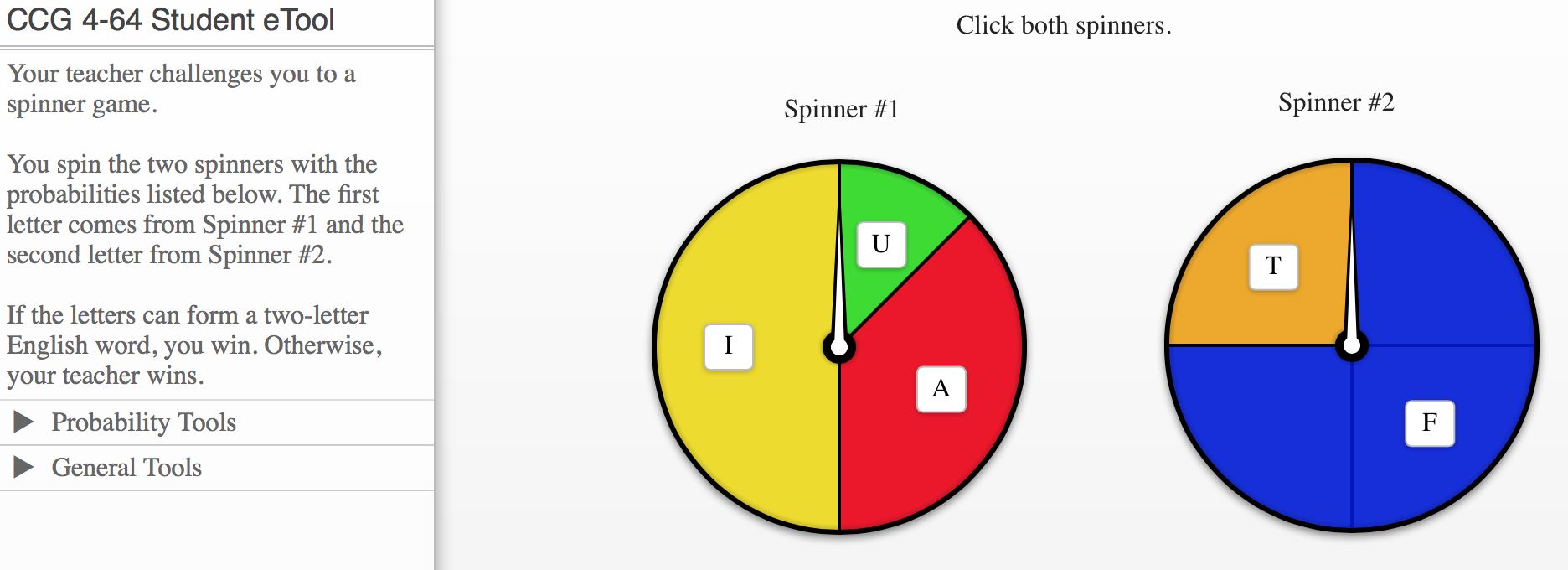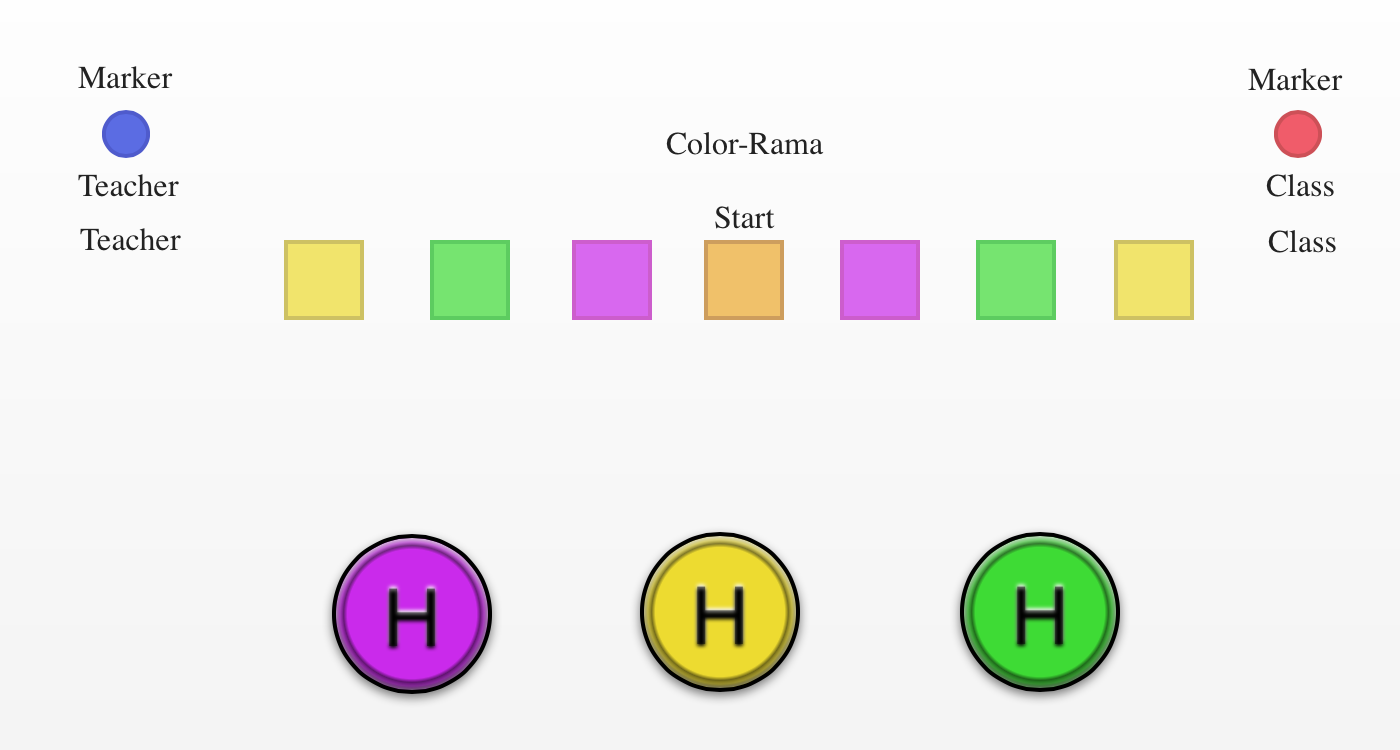Probability
- In your team, simulate CCG 4-64 using the CCG 4-64 Student eTool (CPM)!
- How many times do you need to play the simulation?
- What is the probability you will win?
- Is this game fair?
- Why do a simulation?

- In your team, play the color-rama game or the 5-54 Ten 0's game.

- In your team, modify the game you played.
- How does your chance of winning change with the modifications you made.
- Is your game fair?
- What critical thinking is involved when modifying an existing game!
- Create your own game!
- In the Gear, choose "options" and describe your new game!
- Choose probability tools to create your game!
- What decisions do you need to make to create a game?
- How would you know if your game was fair?
- What makes an exciting game?
- Examples of eTool writeups:
- Try this:
- 9-104. FLIP TO SPIN OR ROLL
At the county fair, there are many popular games to play. One of them is Flip to Spin or Roll. First, the player flips a coin. If a head comes up, the player gets to spin the big wheel, which has ten equal sections: three red, three blue, and four yellow. If the coin shows a tail, the player gets to roll a cube with three red sides, two yellow sides, and one blue side. If the wheel spin lands on blue, or if the blue side of the cube comes up, the player wins a stuffed animal.
-
Draw a modified area model to represent the sample space for Flip to Spin or Roll. Note that the rectangles for heads will have different areas than the rectangles for tails.
- Suppose that you know that Tyler won a stuffed animal. Discus this with your team and then shade the appropriate parts of the modified area model to help you figure out the probability that he started off by getting a head. Be prepared to share your ideas with the class.
- Use this puzzle in the following book and lessons:
- CC2 Chapter 1.2; 5.2;
- CCA 10.1.1
- CCG Chapter 4.2; 6.2.4; Chapter 10.2; Chapter 10.3
- CCA2 10.3.1; Chapter 11.1
- INT1 4.1.1; 8.1.4
- INT2 Chapter 3.2; 6.2.5; Chapter 9.3

